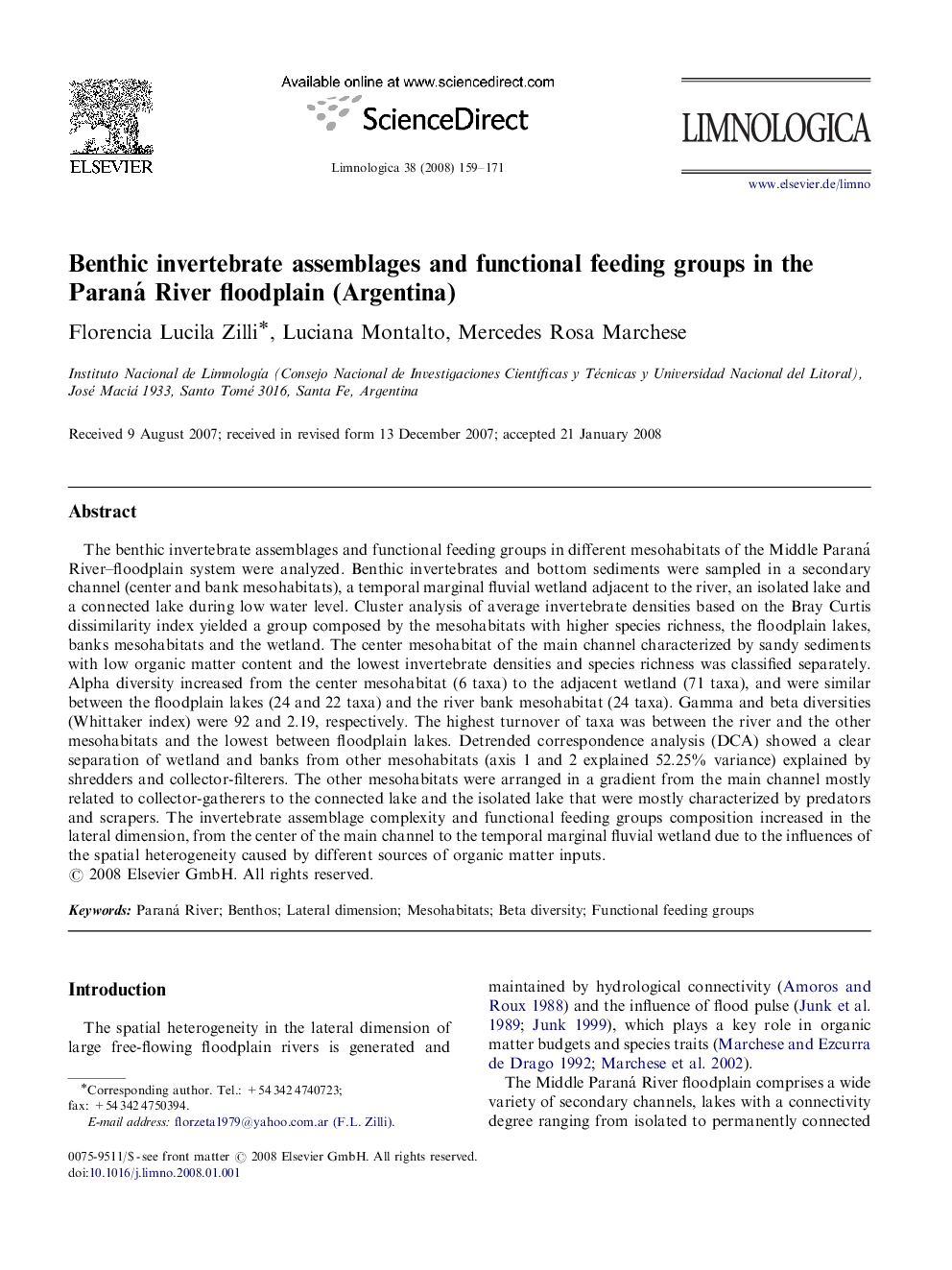| کد مقاله | کد نشریه | سال انتشار | مقاله انگلیسی | نسخه تمام متن |
|---|---|---|---|---|
| 4400717 | 1306993 | 2008 | 13 صفحه PDF | دانلود رایگان |

The benthic invertebrate assemblages and functional feeding groups in different mesohabitats of the Middle Paraná River–floodplain system were analyzed. Benthic invertebrates and bottom sediments were sampled in a secondary channel (center and bank mesohabitats), a temporal marginal fluvial wetland adjacent to the river, an isolated lake and a connected lake during low water level. Cluster analysis of average invertebrate densities based on the Bray Curtis dissimilarity index yielded a group composed by the mesohabitats with higher species richness, the floodplain lakes, banks mesohabitats and the wetland. The center mesohabitat of the main channel characterized by sandy sediments with low organic matter content and the lowest invertebrate densities and species richness was classified separately. Alpha diversity increased from the center mesohabitat (6 taxa) to the adjacent wetland (71 taxa), and were similar between the floodplain lakes (24 and 22 taxa) and the river bank mesohabitat (24 taxa). Gamma and beta diversities (Whittaker index) were 92 and 2.19, respectively. The highest turnover of taxa was between the river and the other mesohabitats and the lowest between floodplain lakes. Detrended correspondence analysis (DCA) showed a clear separation of wetland and banks from other mesohabitats (axis 1 and 2 explained 52.25% variance) explained by shredders and collector-filterers. The other mesohabitats were arranged in a gradient from the main channel mostly related to collector-gatherers to the connected lake and the isolated lake that were mostly characterized by predators and scrapers. The invertebrate assemblage complexity and functional feeding groups composition increased in the lateral dimension, from the center of the main channel to the temporal marginal fluvial wetland due to the influences of the spatial heterogeneity caused by different sources of organic matter inputs.
Journal: Limnologica - Ecology and Management of Inland Waters - Volume 38, Issue 2, 26 May 2008, Pages 159–171